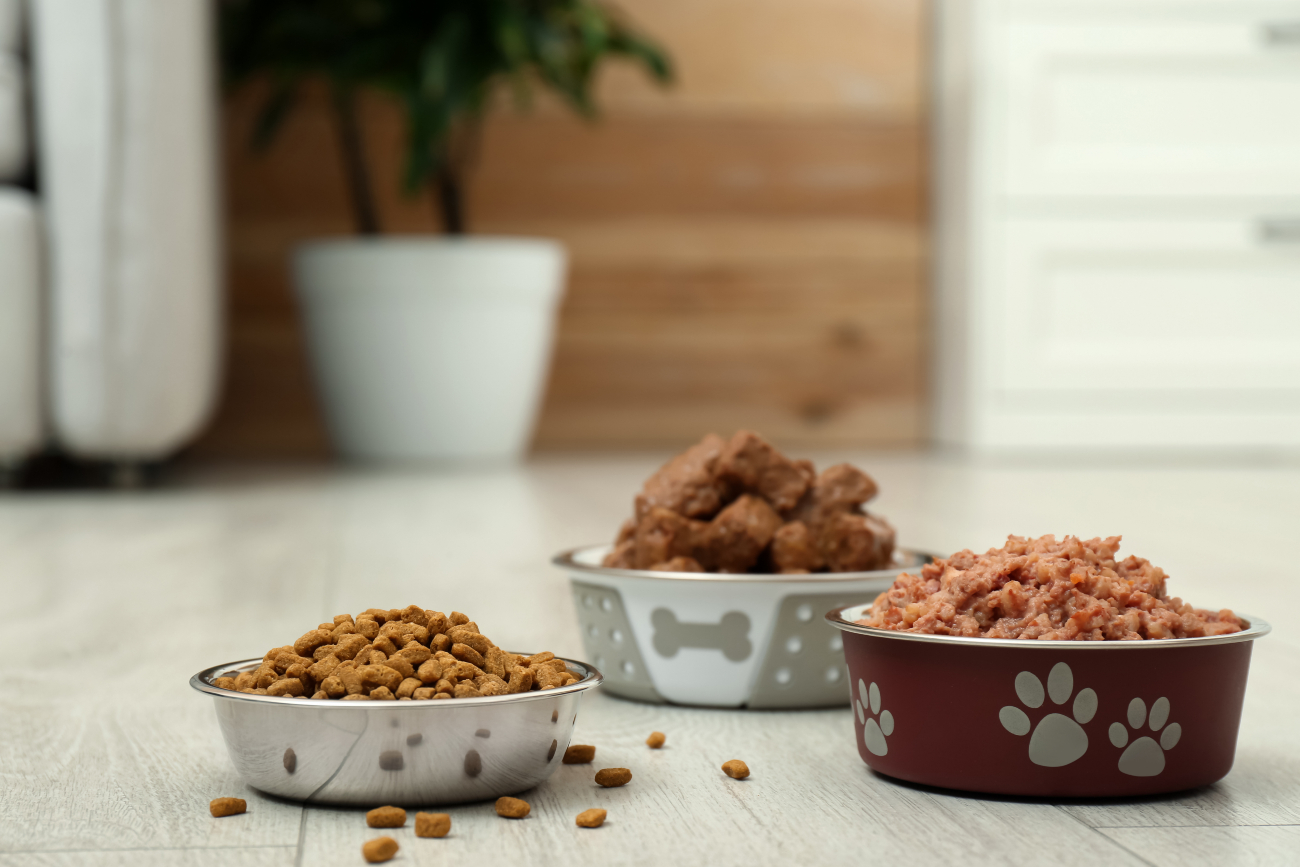Free feeding vs scheduled meals: Which is better for your dog?
15th March, 2024

As a pet parent, it's crucial to ensure that your beloved four legged friend receives proper nutrition, as it plays a significant role in their overall health and wellbeing.
There are two primary options when it comes to feeding your dog: free feeding and scheduled dog meals. Each method has its pros and cons, and the choice often depends on your lifestyle, your pet's health, and their eating habits.
The debate over free feeding vs scheduled meals is a hot topic among dog owners and many pet professionals. In this comprehensive article, we aim to delve into this subject and provide you with everything you need to make the best decision for your canine companion.
Understanding the concept of free feeding
Free feeding, also known as ad libitum feeding, is a method where your dog has constant access to food throughout the day.
The food bowl is always filled, allowing your dog to eat whenever they please. Free feeding is generally more convenient for pet owners with a busy schedule, or those who are not consistently at home during mealtimes.
Pros of free feeding
- Convenience: It's undeniably easier to fill up your dog's bowl and let them eat at their leisure, especially if you're away from home for extended periods.
- Flexibility: Some dogs prefer grazing throughout the day, and free feeding accommodates this natural instinct.
- Simplicity: There's no need to worry about missing mealtimes or adjusting your schedule to accommodate feeding times.
Cons of free feeding
- Risk of obesity: Free feeding can lead to overeating and subsequently, weight problems. Dogs, much like humans, may eat more than necessary if given free access to food.
- Difficulty in monitoring food intake: With free feeding, it's challenging to keep track of how much your dog is eating, which can make it harder to spot changes in appetite that could signal medical issues.
- Multi-pet households: If you have multiple pets, it can be tricky to monitor who is eating what, especially if your pets have different dietary requirements or one is more dominant around food.
Understanding the concept of scheduled meals
Scheduled feeding, or meal feeding, is just as it sounds – feeding your dog at specific times of the day. This method usually involves providing a measured amount of food, typically twice a day, and removing any uneaten food after a certain time period.
Pros of scheduled meals
- Weight management: Scheduled feeding allows you to portion control your dogs meals, helping to maintain a healthy weight.
- Monitoring health: A regular schedule for feeding times make it easier to observe changes in your dog's appetite, which could be a sign of illness or injury.
- Training and routine: Scheduled meals can be a useful tool for house training, particularly with puppies. It also provides a routine, which many dogs find comforting.
- Diet variety: With scheduled meals, it's possible to incorporate a wider range of foods into your dog's diet, including wet or fresh foods.
Cons of scheduled meals
- Time commitment: Scheduled feeding requires consistency and can be difficult to maintain if you have an irregular schedule.
- Potential stress: Some dogs may become anxious or upset if their next meal is delayed or missed. It may also cause them to eat their food too quickly, which can lead to choking or something more serious such as gastric dilatation-volvulus (GDV), which is potentially life-threatening.
Comparing free feeding vs scheduled meals
When comparing free feeding vs scheduled meals, it's essential to consider not only your dog's health and wellbeing but also your lifestyle and the practicalities of each method:
- While free feeding might seem more convenient, it can have significant downsides, particularly concerning weight management and monitoring your dog's health.
- Scheduled feeding require a consistent routine and may not be suitable for everyone, particularly those with irregular schedules.
What is the most cost effective way to feed a dog?
Feeding your furry friend doesn't have to break the bank. So, what is the most cost effective way to feed a dog? The answer lies in finding a balance between nutrition and affordability.
One way to achieve this is by purchasing high-quality dry dog food in bulk. This not only saves on cost-per-serving but also provides your pooch with all the essential nutrients required for a healthy life. Check out our blog on the best dog food brands for a few ideas on what to buy.
Another cost-effective strategy is to make homemade dog food. Using ingredients already in your kitchen, you can prepare nutritious meals tailored to your dog's dietary needs.
Remember, it's crucial to consult with a veterinarian or a pet nutritionist before switching to homemade meals to ensure your pup is getting a balanced diet.
Moreover, consider incorporating affordable, dog-safe fruits and vegetables like carrots and apples into their diet. These can serve as healthy, low-cost treats in between meals.
Keep an eye out for discounts and sales at your local pet store or online retailers. With these strategies, feeding your dog becomes not just cost-effective but also a means to ensure they're healthy and happy!
Is scheduled feeding better than free feeding puppies?

Absolutely! Scheduled feeding not only helps monitor your puppy's health and dietary intake, but also aids in establishing a solid routine for them. This can be particularly beneficial when it comes to housebreaking.
Making the transition
If you've decided that a change in feeding method is in order, there are ways to make the transition smoother for both you and your dog.
If you’re moving from free feeding to scheduled meals, start by offering food at scheduled mealtimes and remove any uneaten food after about 20 minutes. Your dog will soon learn the new routine.
Incorporating variety and enrichment
Regardless of whether you choose free feeding or scheduled meals, it's important to remember that mealtime can offer more than just nutrition. Free feeding dogs can also be a time for mental stimulation and bonding.
Consider using slow feeders, puzzle feeders, or even hiding food for your dog to find. This can add an element of fun and challenge to their dog meals and keep them engaged.
How important is it to ration dog food?
Rationing dog food is crucial for maintaining your furry friend's health and longevity. How important is it? It's as important as feeding them the right kind of dog food.
Providing measured meals prevents overeating, obesity, and the health risks that come with it such as heart disease and arthritis. Rationing also helps in monitoring their appetite - a sudden change can indicate potential health problems.
What's best for your dog?
The best feeding method for your dog depends on various factors, including their age, health, breed and lifestyle, as well as your own schedule and preferences. It might be that a combination of both methods works best for you and your dog.
For example, you might leave a small portion of dry food for your dog to graze on during the day, then feed a scheduled meal of wet food in the morning and evening.
When considering free feeding vs scheduled meals, it's always a good idea to consult with your vet. They can provide personalised advice based on your dog's health, age, weight, and breed.
For peace of mind in case of any health issues related to feeding and nutrition, having dog insurance is always a good idea. To get a dog insurance quote for your furry friend, click to get a quote online. If you would like to talk to one of our dog insurance team, you can get in touch with us on 0330 102 5748.
In conclusion, both free feeding and scheduled meals have their benefits and drawbacks. The key is to understand your dog's needs, observe their behaviour and be willing to adjust your approach as necessary.
Remember, what works best for one dog might not work for another. Your dog's health and happiness are paramount, so choose the method that best suits your dog's lifestyle and nutritional needs.
Helpful Pages
Recent Posts
Pet Insurance Quote
- 98% claims paid *
- Claims paid directly to vets
- 24/7 vet video consultations
- Interest free monthly payments




